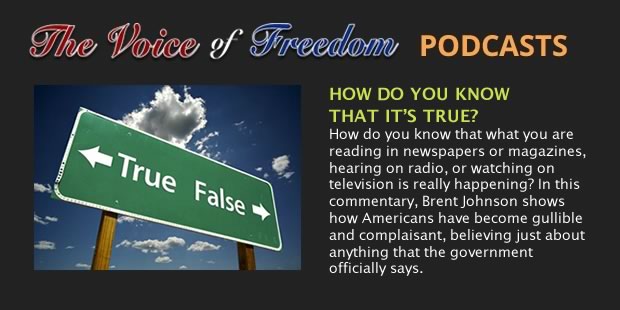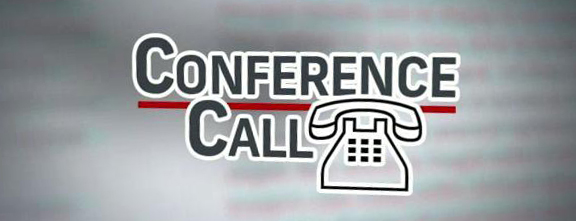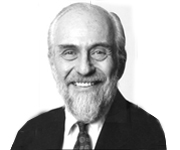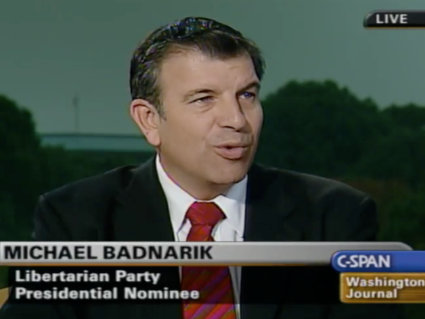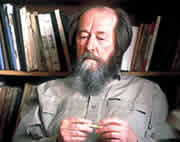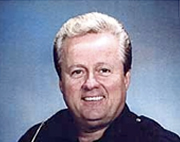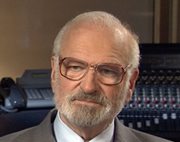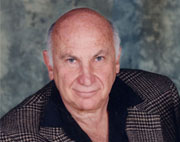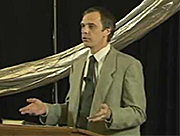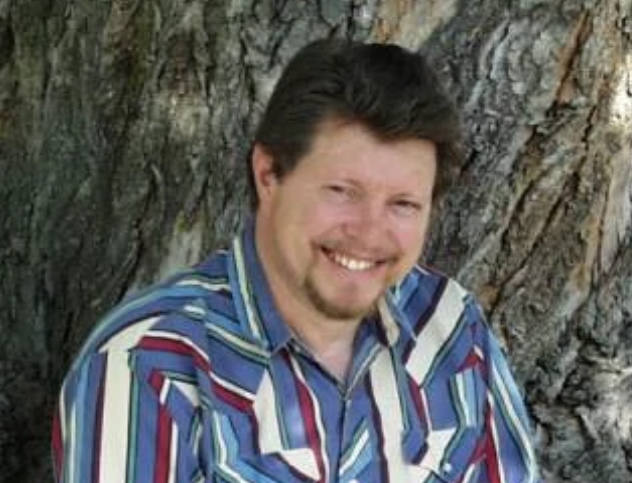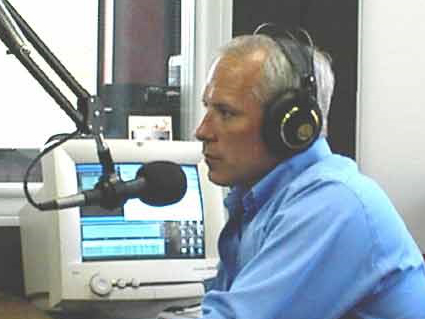
The second-hand smoke con job!
WASHINGTON - March 13, 2009 - In yet another bogus report, this time by Surgeon General Richard Carmona, he claims there is no safe level of second-hand smoke and calls for a workplace ban on smoking.
"The scientific evidence is now indisputable: second-hand smoke is not a mere annoyance," Carmona said. "It is a serious health hazard that can lead to disease and premature death in children and nonsmoking adults."
The truth is every study used by the anti-smoking group on second-hand smoke has been proven to be flawed and the data manipulated. A comprehensive list of these studies is illustrated in the Environmental Protection Agency document EPA/600/6-90/ 006F, page 5-28 and 5-29.
Writing in the National Post (March 25, 2000) Steven J. Milloy said, "There is no controversy over whether second-hand smoke can be a nuisance. But scientific studies purporting to link second-hand smoke with health effects are invariably controversial. The Health Canada study is no different. . . The statistical associations in the Health Canada study are weak; and it has other shortcomings. Smoking itself is not an established risk factor for breast cancer. . . In the financial world, legal remedies exist for data omission and other fraudulent hijinks. Sadly, no system of accountability disciplines rogue government agencies and their scientists who put political agendas - such as the anti-tobacco jihad - ahead of sound science."
In fact, no study supports the anti-smoker' s claims, even after being manipulated. But they defend their second-hand smoke propaganda because it effectively serves their purpose of advancing their socialist goals.
The anti-smoking zealots in our society have declared a holy war on smoking and are willing to advance their cause regardless of the scientific evidence to the contrary. They have set aside common sense in favor of some feely-feely politically correct nonsense.
"We believe the health threats to children and adults from breathing second-hand smoke are very real." - EPA Administrator Carol Browner
Never mind the evidence shows otherwise, but they "believe".
Environmental Tobacco Smoke (ETS) is hundreds or thousands of times as dilute as mainstream smoke. Casual exposure to ETS (say a couple of hours per week in a bar) exposes the non-smoker to perhaps one ten-thousandth of what a smoker gets. Although the amount that gets into the bloodstream might be measurable in a laboratory, the effect on the exposee would be difficult or impossible to detect. Other factors such as the drinks our poor non-smoker consumed while in the bar will potentially have far worse effects than the second-hand smoke they inhaled.
The popular socialist plea today is, "for the children," and the anti-smoking propagandists have played this card to the hilt. They tell you, for example, that the incidence of children with asthma is going up because of smoking.
If the increased incidence of children with asthma is going up because of smoking, why is it that when fewer people smoke according to their statistics, then more children develop asthma? Duh?? Their arguments may sound good (for the children), but they are total nonsense.
Second-hand smoke does not cause Asthma. There are no allergens, protein or protein-carbohydrat e complexes, present in tobacco smoke to cause attacks either. But, asthma attacks can be psychosomatic. And, thanks to the anti-smoking group and the media, a child who has been told that tobacco smoke triggers an asthma attack possibly will have an attack if tobacco smoke is visible. (Numerous clinical trials have shown that no attacks occur if children do not know that they are in the presence of tobacco smoke.)
In studies conducted by the World Health Organization, statistically significant evidence was found that childhood exposure to cigarette smoke cuts the risk of lung cancer by 22 per cent. But, because WHO was so "focused" on finding "proof" of an extra cancer risk in statistically non-significant evidence, it was blind to seeing anything at all in significant evidence for a lower cancer risk. As a result, these results were ignored by WHO and not reported in the news media.
It's been said that if you tell people a lie often enough, they will begin to believe it.
That maxim has worked well for the anti-tobacco jihadists. Today you will find many people who have bought in to this lie - they've taken the bait hook, line, and sinker. They gleefully accept misleading statistics and lies from a highly suspect government agency despite volumes of self-serving and flawed data.
A 2005 report by the U.S. Centers for Disease Control and Prevention said that second-hand smoke caused the death each year in the United States of 3,000 people from lung cancer, 46,000 from heart disease and 430 newborns from sudden infant death syndrome.
"Smoking by parents causes respiratory symptoms and slows lung growth in their children," the report added. "The scientific evidence indicates that there is no risk-free level of exposure to secondhand smoke."
According to the CDC, nearly 9 out of 10 nonsmoking Americans are exposed to environmental tobacco smoke as measured by the levels of cotinine in their blood. The data, reported by the CDC in the Journal of the American Medical Association, shows measurable levels of cotinine in the blood of 88% of all nontobacco users. The presence of cotinine, a chemical the body metabolizes from nicotine, is documentation that a person has been exposed to tobacco smoke.
- In 1992, EPA completed a major assessment of the respiratory health risks of ETS (Respiratory Health Effects of Passive Smoking: Lung Cancer and Other Disorders EPA/600/6-90/ 006F).
- The report concludes that exposure to ETS is responsible for approximately 3,000 lung cancer deaths each year in nonsmoking adults and impairs the respiratory health of hundreds of thousands of children.
- The EPA claims ETS exposure is causally associated with an increased risk of lower respiratory tract infections (LRIs) such as bronchitis and pneumonia, estimating that 150,000 to 300,000 cases annually in infants and young children up to 18 months of age are attributable to ETS.
- ETS exposure is causally associated with increased prevalence of fluid in the middle ear, symptoms of upper respiratory tract irritation, and a small but significant reduction in lung function.
- ETS exposure is causally associated with additional episodes and increased severity of symptoms in children with asthma, estimating that 200,000 to 1,000,000 asthmatic children have their condition worsened by exposure to ETS.
- ETS exposure is a risk factor for new cases of asthma in children who have not previously displayed symptoms.
In truth, there here is no association between lung cancer and Environmental Tobacco Smoke (ETS), regardless of whether the source is spousal smoking or workplace ETS.
In a report titled, "Cigarette Taxes to Fund Health Care Reform: An Economic Analysis," the Congressional Research Service (CRS) found that the EPA study made subjective judgements, failed to account for factors that could bias results, and relaxed scientific standards to achieve the desired pre-determined results.
What they did was to ignore any data that did not conform to their publicly stated conclusions, conclusions made even before the research was begun! Hardly scientific!
The EPA report was a meta-analysis, which combined the findings of 11 US studies. None of the 11 studies found a statistically significant risk because the low end of their CI was less than 1. A possible reason for 'false negative' findings is too small a number of subjects causing a wide CI range. Statisticians call this 'low power'. In order to increase power the EPA combined the studies. The result was still not statistically significant because the low end of the CI range was less than 1.0.
To achieve the results that their theory demanded (that secondhand smoke causes cancer) they simply altered the statistical methods used. They lowered the confidence level to 90% in violation of their own published standard: "Guidelines for Carcinogenic Risk Assessment (51 FR 3392)."
Based on the weight of the selective scientific evidence, the U.S. Environmental Protection Agency (EPA) concluded that the widespread exposure to environmental tobacco smoke (ETS) in the United States presents a serious and substantial public health impact.
With one exception (Fontham), no major scientific study has found a danger in casual exposure to smoke in workplace or social settings. They found it in non-smoking spouses exposed for over 40 years. The danger, if any, from casual exposure is too small to measure. The CRS reported that other studies that showed no relationship were ignored, stating that "the one with the largest number of observations found no overall increased risk of lung cancer among nonsmoking spouses of smokers."
The CAL-EPA has been seriously mislead by the analyses and conclusions presented in the two largest U.S. epidemiologic studies of ETS and lung cancer according to Dr. William Butler, a researcher in biostatistics and epidemiology for more than 20 years. The Brownson and Fontham studies show no association between ETS and lung cancer, when analyzed properly according to standard epidemiologic practice. The results from these two studies are plainly inconsistent with the conclusions of the U.S. EPA's 1992 risk assessment and CAL-EPA's preliminary report.
The conclusion of the Brownson study stated that "Our and other recent studies suggest a small but consistent increased risk of lung cancer from passive smoking."
However, this assertion is not supported by or consistent with the results of more valid analyses that include only self-respondents, according to another researcher. Apparently in the Brownson study, they did not include the quantitative results from the statistical analysis of the self-respondents in their published report to the CAL-EPA.
Upon analysis of the omitted data, there is no association between lung cancer and "Highest Exposure Category vs Never" exposure. Also, there is no pattern of association between lung cancer and the categories of ETS exposure. Further, when you analyze the Brownson data in the same manner for occupational ETS exposure, the results are the same. There is no association between lung cancer and "Ever vs Never" occupational exposure among the self-respondents or among the surrogate respondents. These findings are consistent with Brownson's conclusion that "there is no elevated lung cancer risk associated with passive smoke exposure in the workplace." (p. 1527)
The Fontham study examined the joint exposure to childhood and adult ETS exposure. Fontham interpreted the results to indicate that adult ETS exposure is associated with higher lung cancer risk and that the elevations in risk for women exposed during childhood were twice as high as those of women not exposed during childhood.
The CAL-EPA was seriously misled by the manner in which Fontham et al conducted and presented those analyses because Fontham et al. did not acknowledge the presence of a statistical interaction that supports the absence of an association between ETS and lung cancer. Dr. Butler re-analyzed the Fontham data on the joint exposure to ETS during childhood and adulthood using a single baseline group (that is, those with neither childhood nor adult ETS exposure) for all combinations of exposure. The use of a single baseline group is recommended in standard epidemiologic textbooks such as Kleinbaum, Kupper and Morgenstern; Breslow and Day; Schlesselman; and others.
Based on this single baseline group, there was no association between adult ETS exposure and lung cancer - regardless of whether or not the women had childhood ETS exposure. The data clearly indicate that there is no increased risk of lung cancer associated with adult or childhood ETS exposure, and any analysis that implys such an association distorts the patterns present in the data.
The two largest U.S. epidemiologic studies of ETS and lung cancer are in agreement: There is no association between lung cancer and adult ETS exposure, a finding that contradicts the stated conclusions of each study. Further, the two largest U.S. epidemiologic studies are not consistent with U.S. EPA's conclusion that ETS is a lung carcinogen or with CAL-EPA's conclusion that post-1991 epidemiologic studies support a casual relationship between ETS and lung cancer.
In July, 1998, U.S. District Judge William Osteen in North Carolina, ruled the EPA based its 1993 report on inadequate science and failed to demonstrate a statistically significant relationship between secondhand smoke and lung cancer. Osteen wrote: "EPA publicly committed to a conclusion before research had begun; excluded industry by violating the (radon law's) procedural requirements; (and) adjusted established procedure and scientific norms to validate the agency's public conclusions. " The judge further criticized the EPA for having "aggressively utilized" the report's findings "to establish a de facto regulatory scheme intended to restrict plaintiff's products and to influence public opinion." ("EPA stands behind link between secondhand smoke, cancer," CNN, July 19, 1998)
The EPA later published their rebuttal to critics of their bogus studies, "Setting the Record Straight: Secondhand Smoke is A Preventable Health Risk." In the introduction of that document the EPA clearly states who they believe are their main critics: the tobacco industry. While I would agree the tobacco industry is one of their critics, they are not the only one. There are many intelligent people with NO ties to the tobacco industry who can see through their lies.
I believe the document demonstrates their paranoia and fear of ANYONE who would dare question the perceived superior and exhalted stature of the federal government, government bureaucrats, and socialist organizations supporting their agenda. Indeed, the document furthers their demonization attack on the "evil tobacco industry" and includes quite a bit of new focus group tested, politically correct misrepresentations of the facts.
Doesn't make sense, does it? Why would the government, knowing there is no association between lung cancer and ETS exposure, continue to scare the public into believing there is? Why would Surgeon General Richard Carmona lie through his teeth with the statement, "The scientific evidence is now indisputable" when in fact, the evidence is highly disputed?
If you knew the truth about ETS exposure, you would not voluntarily contribute your money to the government to continue funding their bogus studies.
The federal government has taken the volumes of bogus data and used it to extend its reach into the private sector.
Based on false and misleading statistics we have allowed the courts and the government to intrude into our lives more than ever in our history.
Writing in the Wall Street Journal, Lorraine Mooney said, "...the definitive study on passive smoking, sponsored by the World Health Organization, reported no cancer risk at all."
It takes 20 years or more for damage to manifest itself in a smoker. Environmental Tobacco Smoke (ETS) is hundreds of times more dilute than mainstream smoke. Non-smokers would have to live with ETS for upwards of 2,000 years to incur the same damage.
From the US Dept. of Transportation' s Dec. 1989 report entitled "Airliner Cabin Environment: Contaminant Measurements, Health Risks and Mitigation Options," we learned:
For business passengers, flying 480 hours per year for 30 years starting at age 35, the lifetime risk of premature cancer death expressed as number of expected premature deaths per 100,000 flying cabin occupants - Ascribable to ETS : .27 (point.27) Ascribable to in-flight Cosmic Radiation: 504. Here we see that the risk from in-flight cosmic radiation is some 1867 times higher than the risk from ETS. Yet the risk from cosmic radiation is routinely ignored while we fanatically ban smoking on airplanes.
In the Florida airline flight attendants case, the judge would not allow the defense to present evidence from the Federal Aviation Administration, who on March 5th, 1990, issued an advisory to all carriers #AS120-52. Subject: Radiation Exposure of Air Carrier Crew Member signed by Robert McMeeken, MD, Federal Air Surgeon. This advisory provided information on cosmic radiation and air shipments of radioactive material. It spoke to airline attendants who flew above 25,000 feet. The higher the altitude, the higher the doses of radiation. Regarding risk to the unborn child, the advisory estimated that 11 in 10,000 would suffer serious health effects such as genetic defects or embryonic death from radiation. The flying public was never warned of the danger of radiation.
Air traffic now flies at 30,000-35,000 feet instead of the 39,000-41,000 feet as in the past. To compensate for the higher fuel cost fresh air systems have been shut off to the point of causing discomfort for passengers i.e. a 50% decrease in fresh air means that every other breath taken is "second-hand" air, as passengers breath in each others biological "bath water" and airborne pathogens.
Chemical dependency counselor, Debora J. Orrick, makes the claim on the drkoop web site, "The consistency of results seen in numerous American and international research studies of ETS lead to a certainty of more than 99.9 percent that second-hand smoke increases the risk of lung cancers in nonsmokers."
From an August, 1994 Good Housekeeping article entitled "Risks": If you are a nonsmoker married to a smoker, you will die of lung cancer from your spouse's smoking - Risk Factor: 1 in 60,000.
- You will have a heart attack 1 in 77
- You will be attacked with a deadly weapon 1 in 260
- You will die of heart disease 1 in 340
- You will die in an auto accident 1 in 5,000
- You will have AIDS 1 in 5,700
- You will be murdered 1 in 11,000
- You will die in a fire 1 in 50,000
- You will die in an airplane crash 1 in 250,000
- You will die in your bathtub 1 in 1 million
- You will die from falling out of bed 1 in 2 million
- You will freeze to death 1 in 3 million
Smoke from charcoal contains many of the same components as those most feared in tobacco smoke (carbon monoxide, formaldehyde, carcinogens and so forth). A ten-pound bag of charcoal produces as much smoke (and harmful chemicals) as 160 packs of cigarettes.
So, are you going to quit barbecuing?
So, why do the government, health care agencies, and the insurance industry make such a big deal about ETS when the research doesn't even support their claims?
At the risk of repeating myself... It's because of their endless pursuit of money, control, and jurisdiction.


